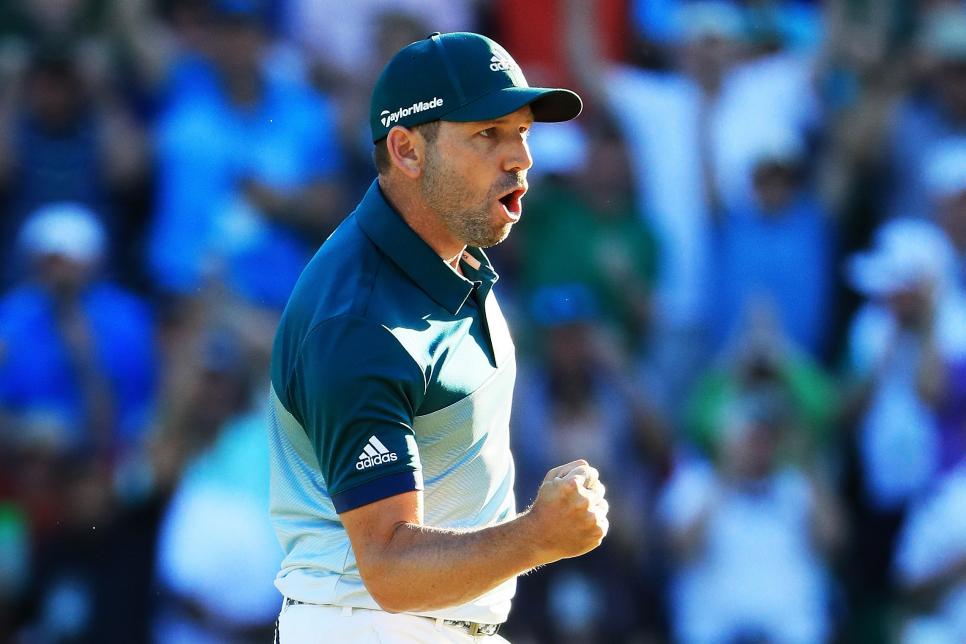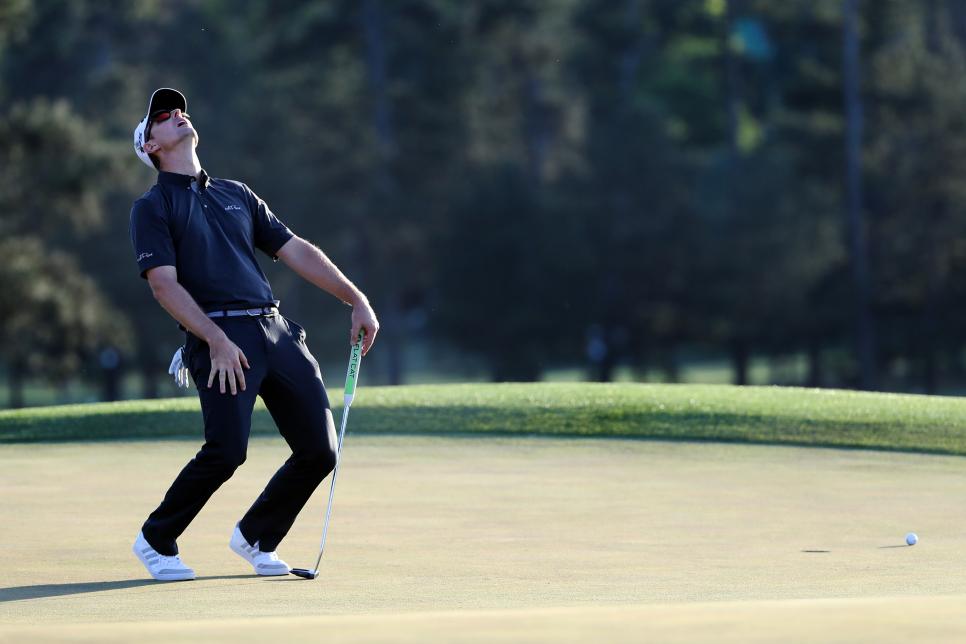News
The Masters had its lowest TV rating in 13 years. Why?

Andrew Redington
On the surface, the 2017 Masters had all the makings of an engaging, captivating broadcast. A beautiful day in Augusta. The leader board littered with big names. A fight to the finish, one prolonged via sudden death. The enthralling narrative of a maligned soul finally breaking through. Must-see theater, incarnate.
Except, not that many people saw it.
According to Sports Media Watch, the final round of the Masters drew a 7.6 overnight rating. That's 11-percent lower than last year, a 21-percent drop from 2015 and the tournament's worst showing since 2004. And Sunday was far from an aberration; third-round coverage was down 19 percent from last spring, with Friday's broadcast suffering an 18-percent drop. What gives?
Save for a rain delay, there's rarely a clear-cut answer to viewership issues. However, Neal H. Pilson—the former president of CBS Sports and president of Pilson Communications, Inc.—has some theories.
Pilson's first assertion involves the weather. Not at Augusta, but across America.
"The weather can be an important factor," said Pilson, who also teaches at Columbia. "Extraordinarily good weather in parts of the country can bring numbers down. Cumulative number watching could be down for all television audiences."
This was especially true in the Northeast and the South, the two biggest areas for golf viewership. "Good weather is a killer in swing months. In the fall, people are sneaking in one last trip to the park, and in the spring, it's more pronounced, going outside for the first time," Pilson says. "It was a gorgeous day in the Northeast, where 20 percent of America's households are located. I had to struggle to stay inside myself."

Ben Walton
Then there's the matter of the aforementioned big names. Or specifically, the lack thereof. While Sergio Garcia and Justin Rose are known entities to golf fans, they're not recognized outside of the sport.
"To the people that watch only one or two tournaments a year, they're not well known," says Pilson. "All due respect to two guys who are very good, they're not names that leap in front of the casual viewer. One is from Spain, the other England. I don't think they resonate with the American fan, at least relative to who could have been leading."
Speaking of which, the play of Jordan Spieth and Rickie Fowler did the broadcast no favors. Though the pair was in the penultimate group, they fell out of contention—and off our televisions—early.
"No Spieth, no Rory McIlroy or Jason Day," said Pilson. "Dustin Johnson was not even in the tournament. They are the hottest golfers right now, and were absent on Sunday afternoon."
However, the Masters' ever-expanding second-screen experiences should not be chalked up for this decrease. To Pilson, the industry views these platforms as additions to the broadcast, rather than as substitutions. Watching featured groups or the action from Amen Corner doesn't mean a viewer opts to put something else on the big screen.
"Besides, the people who watch the Masters are not the ones who go, 'Well, I can watch this on my phone, I guess I can leave the house now,'" Pilson remarks.
Pilson doesn't think this is part of a growing trend in sports viewership, one which saw a decrease in last summer's Olympics and the NFL season. "Yes, we are dealing with overall drops in viewership, but this goes in peaks and valleys," Pilson says. "It's hard to say from just one tournament."
It wasn't all bleak news for the Masters. As Austin Karp of Sports Business Daily points out, the last 90 minutes of the telecast grew from 8.0 to 9.1 before peaking at 11.2. And the viewership of the Masters still far outweighs the expected returns from other major champions; last year's U.S. Open pulled a final 3.4 rating on Sunday.